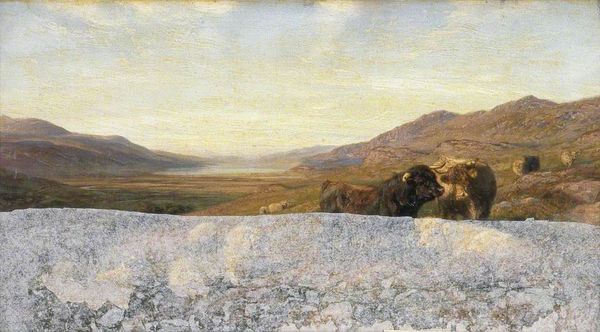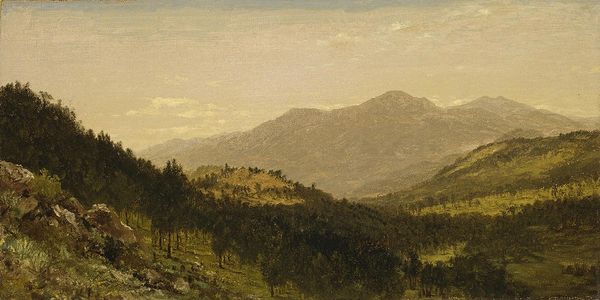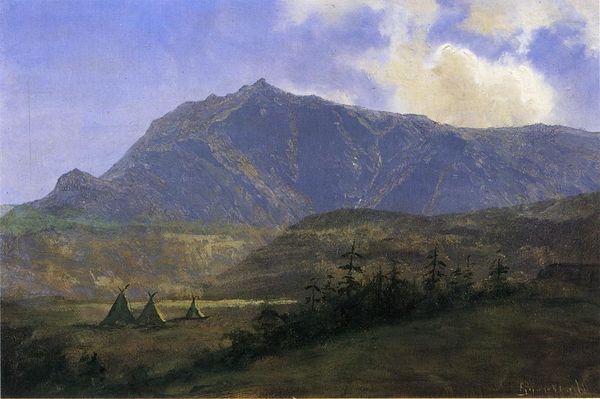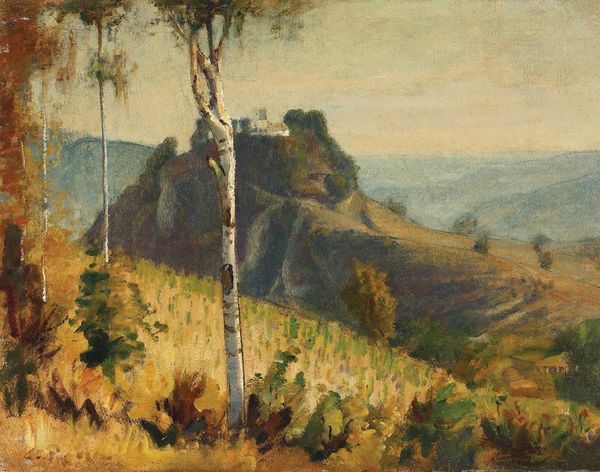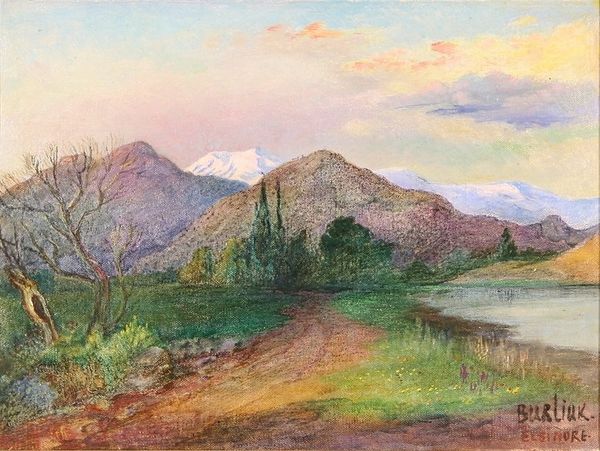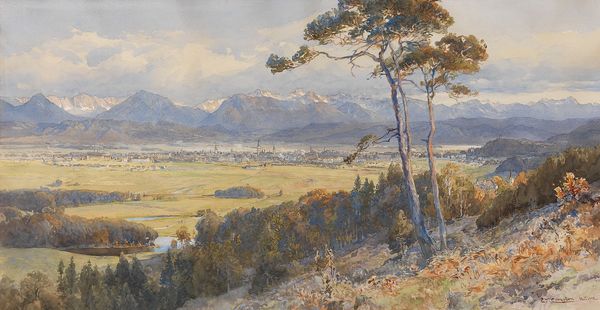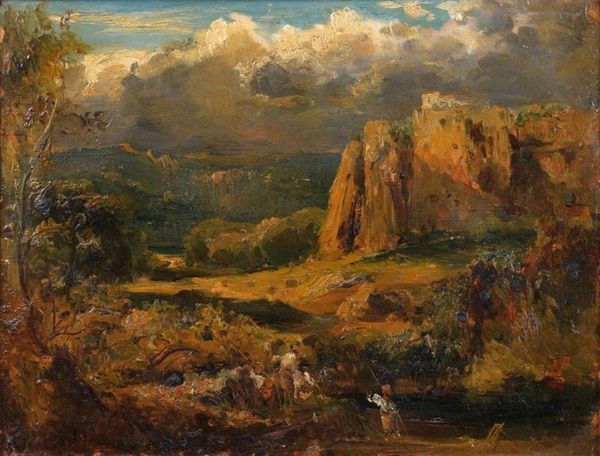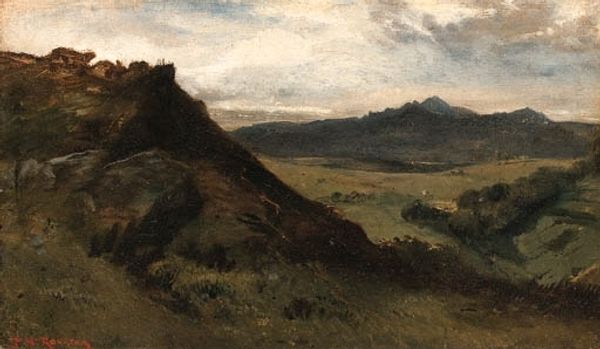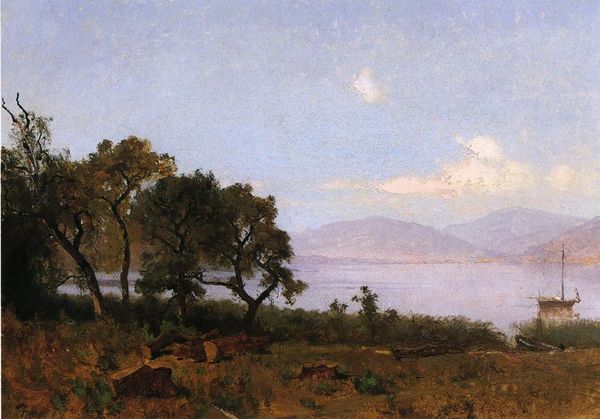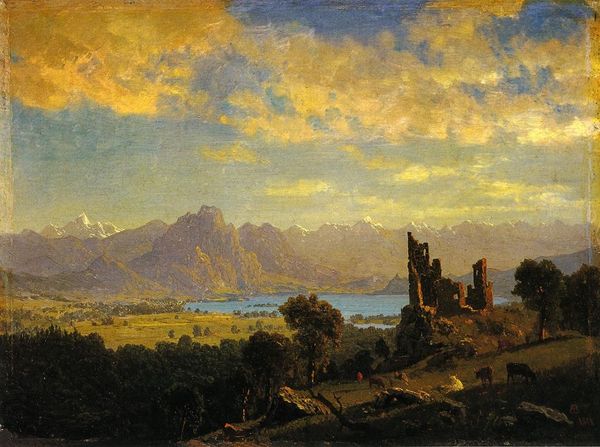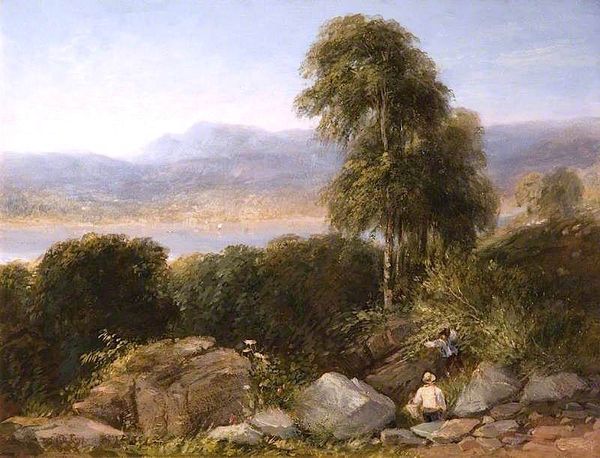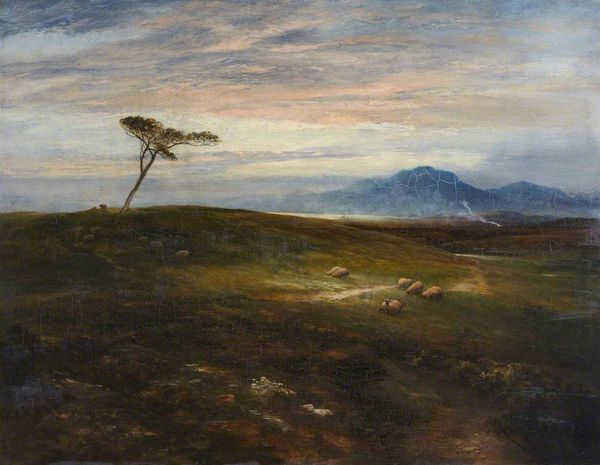
Copyright: Public domain
Editor: This is Giovanni Costa’s "The Apuan Alps from San Rossore," created around 1870 using oil paint. It's such a tranquil scene, almost dreamlike with the soft, muted colours. What do you see in this piece from a more formal perspective? Curator: The painting invites an immediate, sensory reading through its composition. The stratification of space, moving from foreground figures through a blooming plain toward distant mountains, suggests a visual syntax. How do you read the relationship between the figures and the landscape? Editor: They seem very small and almost absorbed by the landscape. It creates a sense of perspective, the mountains really loom in the background. Is that relationship deliberately constructed? Curator: Precisely. The scale of the figures relative to the landscape diminishes their importance, or perhaps, elevates the landscape's dominance. This emphasizes the sublimity of nature, a characteristic of Romanticism but is mediated here through colour. How does Costa deploy colour here? Editor: The hues are incredibly soft and harmonious— lots of purples, blues, and earth tones. It's almost monochromatic, which, combined with the layering, creates depth. Curator: Yes, it is that very tonal range, where colours don't just represent things but generate visual texture. He’s using subtle gradations to sculpt a space in the composition that isn't literal, and more a kind of structured experience. What do you make of that balance? Editor: I see your point. There’s almost an abstract quality in the way the colours are laid down, less concerned with representing exact colours, more with creating an atmosphere. It is more about form and how the work presents than its content. Thank you. Curator: Precisely! By isolating these formal qualities we can reveal an innovative pictorial language at work in "The Apuan Alps from San Rossore," which transcends the merely representational.
Comments
No comments
Be the first to comment and join the conversation on the ultimate creative platform.
